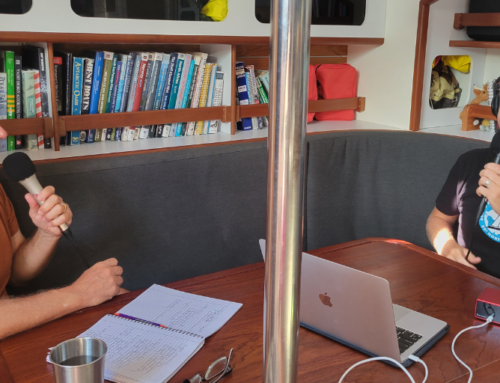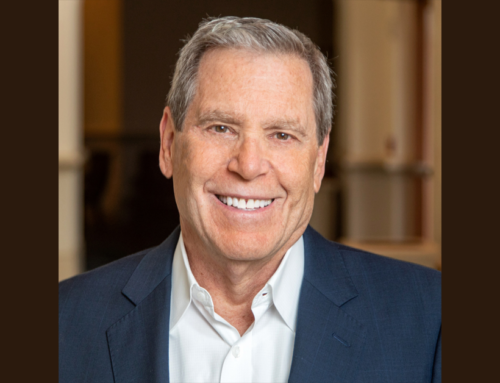What would you do?
—–1. Roe v. Wade might be overturned. If it is and the issue is turned over to the states, would your firm’s insurance include a benefit to cover the cost of a team member crossing state lines to get an abortion?
—–2. We have a midterm election coming up and employees want to talk politics at work. Do you give them space for that?
—–3. Markets are down and your cash flow is tight. Do you take a pay cut as the owner, spread the pain by having everybody take a pay cut, or just cut people?
—–4. A long-term, loyal employee who’s 60 years old is no longer justifying their pay as the company has outgrown them. Do you let them go to make room for someone half their age, who can do twice the work at 75% of the pay?
As a leader, you are called upon to make difficult decisions. And it might be tempting to default to the simplistic “do the right thing.” Unfortunately, the right thing to you could be anathema to other stakeholders.
Making Difficult Decisions
As recently as 10 years ago, it was easier for leaders to make decisions behind the scenes and not worry that their “difficult decisions” would get blasted on Twitter or the Senate floor. Today, we live in a polarized, politicized, and culture-war world that lets nobody off the hook.
Whether it’s Disney and Governor DeSantis, Spotify and Joe Rogan, the Board of Twitter and Elon Musk, or a response to the Supreme Court’s leaked draft ruling in Dobbs v. Jackson Women’s Health Organization, few leaders will escape having to make decisions that will upset a portion of their stakeholders.
You might think this is just a “big company” problem. It’s not. Companies of every size are dealing with vocal employees and stakeholders who can’t just “turn off” social, political, and cultural issues when they get to the office.
So how can you make the “best” decision in a world that is just waiting to pounce on you?
I explored this question in a recent podcast with Eric Pliner, the CEO of YSC Consulting and the author of a new book, Difficult Decisions: How Leaders Make the Right Call with Insight, Integrity, and Empathy. Eric not only leads this international consulting firm, but also consults with CEOs and leadership teams of some of the largest companies in the world.
3-Step Plan
Based on our conversation, here’s a 3-step plan to help you find your backbone and work through making difficult decisions.
1. Be clear on what is the decision to be made.
The first step in making a difficult decision is to make sure you have correctly framed and captured the decision you must make. What exactly is the question you have to answer? This is more nuanced than it sounds.
Let’s use Citigroup as an example. They’ve already made a public response to the potential overturning of Roe v. Wade—but not in the way you might expect.
Rather than answering the question, “Where does Citigroup stand on the issue of overturning Roe v. Wade?” they instead answered a more company-specific question. They essentially answered, “If Roe v. Wade is overturned and each state gets to decide if abortion is legal, how might that affect our health care benefits offering?”
In answering the second question, Citigroup CEO Jane Fraser said, “We’ve covered reproductive healthcare benefits for over 20 years. And our practice has also been to make sure our employees have the same health coverage, no matter where in the U.S. they live. So, to that end, we’ve had a practice of reimbursing travel for many years. We respect everyone’s views on this subject,” according to CNBC’s report from Citigroup’s April 26 shareholder meeting.
By deciding that Citigroup will reimburse travel expenses if an employee has to travel out of state to get an abortion in a state where it’s legal, Citigroup did not make a statement on where they stand on overturning Roe v. Wade. Specifically, Fraser said, “I want to be clear that this benefit isn’t intended to be a statement about a very sensitive issue.” In other words, Citigroup leaned on its past benefits practice of ensuring uniformity of health coverage across the United States and framed its decision with that prime objective in mind.
Will Citigroup’s decision please everybody? No. But the key here is Citigroup was very thoughtful in determining what was the real question they needed to answer. Same goes for you. On your future difficult decisions, take time to think through what exactly you need to answer. By doing so, you may prevent needless divisiveness.
2. Solicit input and clearly communicate who has a view, a voice, a vote, or a veto.
You don’t make decisions in a vacuum. But you can run into trouble when you solicit input from others without being clear with them on their role in making the decision.
As Eric said to me, “When you’re making decisions that affect the group, it is important to be really clear on whether each member of that group has a view, a voice, a vote, or a veto. Unless you clarify the view, the voice, the vote, or the veto, people always assume that they get a veto.”
In his book, Eric wrote that an effective way to solicit input is to preface it by saying, “’I’m asking you because. . .’ And then specify why you’re asking: “I want to hear your view / to account for your voice / to get your vote / or to give you veto power.’”
Getting input is critical and the key is to be clear with your input givers on what their role is in the decision-making process so you don’t needlessly upset them if your decision differs from their input.
3. Use the Morals, Ethics, Role Responsibilities triangle framework as a lens to ensure you engage in deep consideration of how to make the decision and how it affects others.
Difficult decisions are difficult because much of them are based on subjective information, not objective. Plenty of decision-making frameworks exist to improve your decision-making using objective information. Eric’s triangle framework comes into play when we enter the murky world of subjective, emotion-laden information where there’s no single “right” decision to be discovered.
Once you’ve clarified the decision you must make and solicited input from the appropriate people, you can use Eric’s triangle framework to pull everything together and make the best decision possible.
As Eric wrote in Harvard Business Review,
“Every complex leadership decision must balance three subjective dimensions:
- Ethics, or context-specific principles around what is acceptable in your organization or society.
- Morals, or your own internal sense of what is right and wrong, shaped by upbringing, family, community, identity, faith, etc.
- Role responsibilities, or your understanding of the responsibilities associated with your role in the organization.”
Think of these three dimensions as points on a triangle. When faced with a difficult decision, consider your possible decisions, and run each one through the three dimensions. For example, ask yourself:
- What does our ethical environment suggest is an appropriate decision?
- What does my personal moral code suggest is an appropriate decision?
- What does my role as the (CEO) suggest I decide to best meet the needs of my diverse stakeholders?
On the thorniest decisions, you’ll find two of these dimensions are in conflict. In that case, look to the third dimension to perhaps act as a tiebreaker.
What I like about this practical framework is how it forces us to “look inward, look outward, and look around” in our decision-making ecosystem.
In Difficult Decisions, Eric wrote:
If morals are internally referenced, ethics are externally referenced, and role responsibilities are stakeholder informed, then the decision-making triangle can prompt the leader to look inward, look outward, and look around. Looking inward enables us to understand what each of us brings to a dilemma, how our early influences, our psychology, our inner voices, or our identities affect the way that we see and experience the inputs to a decision. Looking outward tells us what the world (or, at least, our broader operating context) has to say about them, and looking around tells us what our key stakeholders might think. Those three directions cover much of our decision-making ecosystem.
Ideally, life would be neat and tidy and all difficult decisions could be answered using this framework. But that’s not the case.
Even when this framework doesn’t point to a clear answer, the triangle is still useful. It forces us to consider a broad range of stakeholders, challenges us on the depth of our self-awareness, and provides insights, empathy, and a potential roadmap on how to communicate your decision knowing some of the recipients will view you as the villain.
Now What?
Rather than wait for the next difficult decision to land in your lap, go back to a difficult decision you made in the past and run it through these three steps. Ask yourself:
- Did I properly identify the question I needed to answer?
- Was I clear in communicating the role my input givers played in my decision-making process?
- What new insights popped out using the triangle framework that I didn’t consider when I originally made the decision?
- Did my actual decision align with the decision I would have made using the triangle framework?
- Knowing what I know now from using the triangle framework, how could I have done a better job communicating the original decision?
- Am I dialed in on my moral compass, my understanding of the ethical environment I operate in, and am I clear on my role responsibilities? If not, what do I need to do to gain this understanding?
You can “practice” revisiting past decisions as a way to improve your skill in making difficult decisions. And you’re going to need that skill.
With polarization, politicization, and culture (and real) wars all around us, all signs point toward it becoming harder to be an excellent leader. To thrive, you need tools like Eric has laid out in his excellent new book, Difficult Decisions.
And be sure to listen to my Barron’s Advisor Podcast with Eric below.





